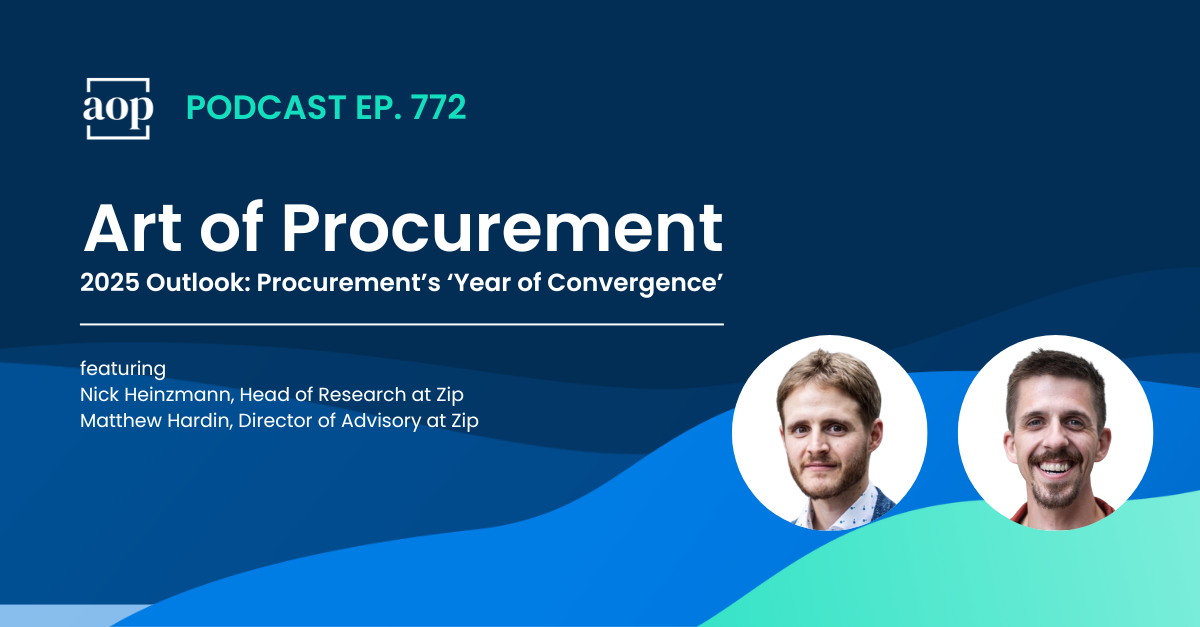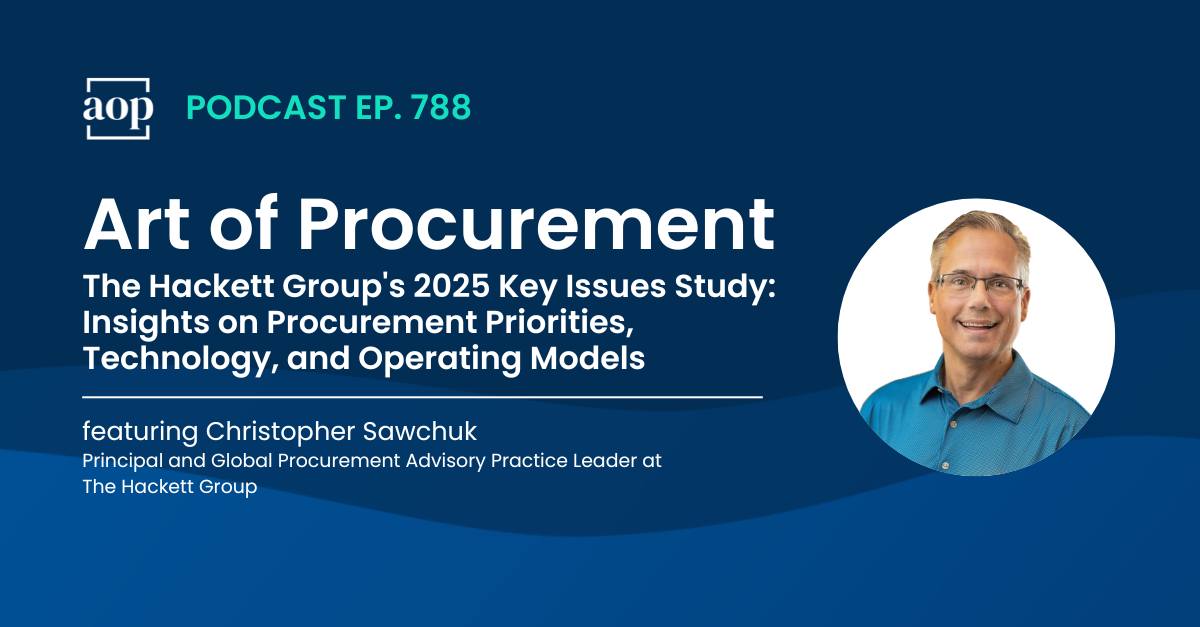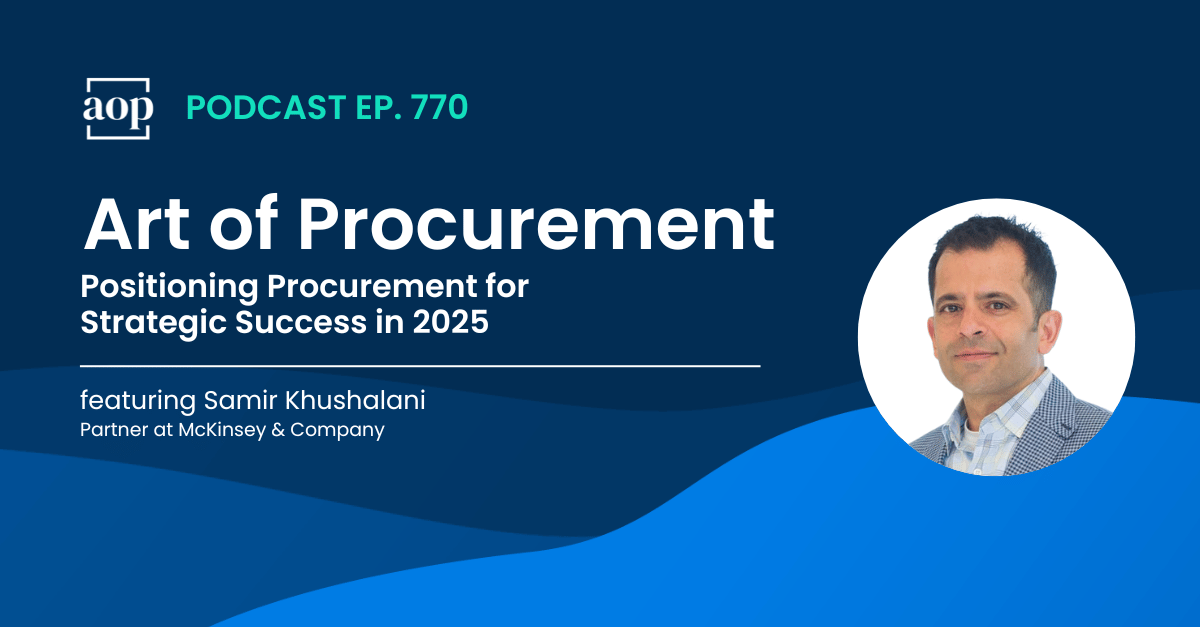3 min read
The Key to Doing More with Less? Evolve Procurement’s Operating Model
Philip Ideson : March 30, 2025
.png)
“We’re seeing data around the acceleration of procurement having to ‘do more with less’ and this is compounding year over year, so at some point, procurement’s operating model is going to break.” – Philip Ideson, Co-Founder and Managing Director, Art of Procurement
Procurement teams across industries might not be at the breaking point yet, but they are being stretched, tested, and pressured. Workloads continue to grow while headcount remains essentially flat, and for many procurement leaders that creates an unsustainable gap that traditional operating models just aren’t equipped to bridge.
This dilemma has elevated operating models to become a central theme in procurement conversations, and it’s certainly a topic we’re hearing more and more about. Because of this, Kelly Barner and I recently had a conversation about why procurement operating models have become such a hot topic, and what this also reveals about how procurement is coping with process change, talent management, and technology investment.
In this episode, we discuss how procurement's organizational approach has evolved over time and why many teams are now rethinking their operating models to adapt to new realities and demands.
Here are some highlights from our conversation:
What is a Procurement Operating Model?
"At its heart, it's just essentially the way that you're organized, the way that you set up to serve whoever is your client within an organization. An operating model brings together how you're utilizing people, how you're utilizing technology, the processes, and how all that comes together."
The Evolution Journey
"Procurement's been on a journey with operating models... starting with the pre-procurement age where buying was done by whoever wore that hat in every department or business unit. Gradually that was brought into a more centralized or formalized approach before becoming center-led for the sake of risk, efficiency, and compliance. Now the trend seems to be this idea of talking about invisible procurement.”
The Pendulum Swing
"What usually happens is a business goes from being decentralized to all of a sudden centralized. It's like the pendulum swings from one extreme to the other extreme. And so you go to a centralized procurement organization where it's all around control... which will often drive high numbers of initial savings, but if you're not careful, it can also lead to a lot of dysfunction."
The Trend Toward Invisible Procurement
"Now the conversations around invisible procurement... it's a really interesting phrase. We're using new technologies that are available to still drive the control and compliance part of things... but in a way that doesn't feel like there's this overarching presence of procurement looking down and pointing fingers at everybody as they're about to do something."
Stakeholder Priorities
"I think on one hand, stakeholders probably don't care about the procurement operating model. They just care about the outputs of what they get from the procurement experience, which is essentially a customer experience. When you evolve the model, you try and bring in efficiencies, so you're making the process easier for them. You're thinking more about the customer experience and the journey that the stakeholder goes on."
Technology Drives Operating Models
"We’re at an inflection point right now where technology is driving the operating model, the ability to make operating model changes... Because I think that the problems that we have, the limitations of the current procurement operating model are not new. You know, we've been talking about them for a long, long, long time... Now as we're talking about, well, what's the next step? I think it's mostly being driven by accelerations in technology more than anything."
The Orchestration Opportunity
"Orchestration is an interesting one because I think that's kind of part of the foundational change... In tying a lot of disparate parts together and being able to serve as a front door, if you will... It allows a stakeholder, through the power of a really good user experience, to pick their journey, supported by underlying technologies that are specific to their needs."
Procurement’s Productivity Gap
"Based upon McKinsey research, procurement is currently managing 50 percent more spend per FTE than they were five years ago, which is a crazy number... In The Hackett Group key issues study, procurement's workload in 2025 is predicted to increase by almost 10 percent, but with that increase in workload, there is only a 1 percent increase in the budget for procurement staff. There is a 5.6 percent increase in procurement technology spend... but that still doesn't cover the productivity gap."
The Breaking Point?
"This is compounding year over year; it's not just a single year problem. At some point it's going to break, the model will break. We all have to figure what's next. We have this moment of time where there's a lot of really interesting technologies to help us to try and figure out the pieces of that puzzle that didn't exist before."
Embracing Experimentation
"It's a rejuvenating time, I think, for anyone who has been in and around procurement for a long time and not necessarily seen a lot of change. There is no right answer. And so this is a journey of experimentation, of curiosity. And actually, the biggest thrill that I get when talking to CPOs is when they say, ‘I don't know what the answer is, and I'm doing this experiment to find out.’"
Subscribe to Art of Procurement
Apple | Stitcher | iHeart Radio | Email
Links & Resources
- Positioning Procurement for Strategic Success in 2025 w/ Samir Khushalani
- Mastering the First 100 Days as a CPO w/ Darshan Deshmukh
- The Hackett Group's 2025 Key Issues Study: Insights on Procurement Priorities, Technology, and Operating Models w/ Chris Sawchuk




